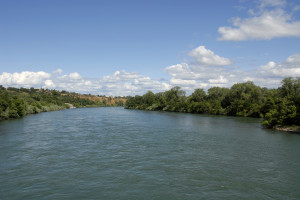Irrigated Nebraska Farmland: What’s the future for water?
 Nebraska is known for its Cornhuskers, but perhaps a more likely mascot would be the Irrigators? According to the results of the 2007 Census of Agriculture, Nebraska is ranked first in the entire nation for total irrigated acres, even falling ahead of the state of California. The Census of Agriculture is conducted every five years, and while the newest 2012 numbers are yet to be released, other statistics corroborate this agriculture trend in irrigation.
Nebraska is known for its Cornhuskers, but perhaps a more likely mascot would be the Irrigators? According to the results of the 2007 Census of Agriculture, Nebraska is ranked first in the entire nation for total irrigated acres, even falling ahead of the state of California. The Census of Agriculture is conducted every five years, and while the newest 2012 numbers are yet to be released, other statistics corroborate this agriculture trend in irrigation.
Specifically, areas in the north and northeast portions of Nebraska have seen the most irrigated acres expansion, where fewer restrictions have been in place up until the last year or two. Antelope and Holt Counties are ranked one and two, respectively, in their expansion of irrigated acres since 2008. Nebraska’s irrigation expansion makes sense, since our state just happens to lie on top of one of the largest freshwater seas in the nation, the Ogallala Aquifer. Combined with higher commodity prices and land values, producers have sought to expand their crop ground.
Some, however, aren’t as optimistic when it comes to water management in our state. Drought concerns, especially after the 2012 growing season, coupled with the news that certain areas of the state are being classified as over appropriated when it comes to the water supply, are keeping area farmers keenly attuned to all things water-related. When an area is deemed over appropriated, it means that the water demands on the area aren’t sustainable with existing supply. This is when the state’s Natural Resource Districts put restrictions on new applications for irrigated acres, transfers, and supplemental irrigation wells, as the Lower Elkhorn NRD board voted to do in November. The board did provide one caveat: It will grant up to 10 acres per project for those who want to complete a full circle for a pivot, up to 400 acres total, this according to Farm Journal Editor Nate Birt, on agweb.com.
While we have a collective interest in maintaining good stewardship of our water resources, it’s also in our state’s economic interest to provide farmers the opportunity to make the most of their land, and the ability to irrigate helps not only them, but the Nebraska as a whole. A study by the Nebraska Farm Bureau found that irrigation helped both the state jobs outlook and the economy in 2012. More specifically, the study found that farmers’ ability to irrigate their crops contributed $11 billion to the economy that same year.
Regarding the important findings of the study, Nebraska Farm Bureau President Steve Nelson explained, “The major take away from the study is that water used for irrigation in agriculture plays a critical role in the state’s economy, whether it’s direct financial benefit or helping protect Nebraska jobs. Given that reality it’s critical we as a state continue to recognize its importance as we talk about future management of our state’s water resources and the role of irrigation in Nebraska agriculture.”
Potential limits on the amount of water producers are allowed to put onto the ground are putting pressure on farmers to become ever more efficient with their irrigation systems. Farmers are researching the best practices for irrigating their crops, whether it’s being smarter about when and how to apply water, to investing in the latest irrigation technology, such as soil moisture probes and variable rate pivots, to help them irrigate as efficiently as possible.
Meeting the needs of our own land and preserving our state’s natural resources is a delicate balancing act. Don’t go it alone—let UFARM help you make the best decisions for your land in light of changing demands.
Sources: (“Study Showed Irrigation Protected Jobs, Fueled Nebraska Economy in 2012.” Nebraska Farm Bureau. 23 Jul. 2013. Web. 19 Feb. 2014.)
(Birt, Nate. “Nebraska Water Woes.” Farm Journal. Agweb.com. 20 Nov. 2013. Web. 19 Feb. 2014.)

